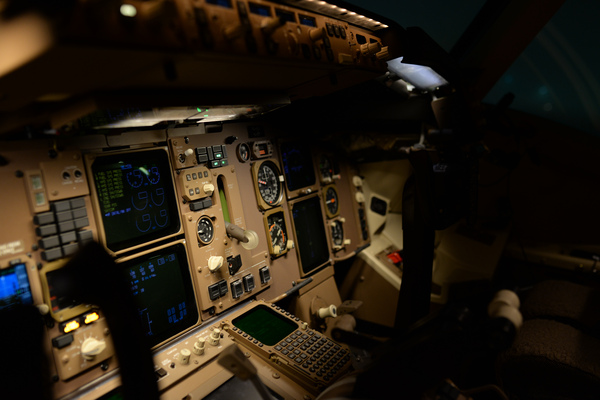Jet travel has transformed the best way we connect, discover, and conduct business across the globe. Since its inception, the jet engine has revolutionized air transport, making it quicker, more efficient, and accessible to tens of millions. In this article, we'll delve into the historical past of jet travel, the know-how behind it, its influence on society, and the way forward for air journey.
The Historical past of Jet Travel
The journey of jet travel began in the early 20th century with the development of the jet engine. Sir Frank Whittle, a British engineer, is often credited with inventing the primary turbojet engine within the thirties. His design was based mostly on the principle of compressing air, mixing it with gasoline, and igniting the mixture to produce thrust. Meanwhile, in Germany, Hans von Ohain independently developed an identical engine, resulting in the first flight of a jet-powered aircraft, the Heinkel He 178, in 1939.
The actual breakthrough for business jet travel got here within the 1950s with the introduction of the de Havilland Comet, the world’s first industrial jet airliner. Although it faced vital challenges, together with security issues and technical issues, the Comet paved the way in which for future jetliners. The Boeing 707, which debuted in 1958, marked the beginning of the jet age in business aviation, providing a faster and extra comfy means of journey over lengthy distances.
The Expertise Behind Jet Travel
At the heart of jet travel is the jet engine, which operates on the principles of thermodynamics and fluid mechanics. There are several varieties of jet engines, including turbojets, turbofans, and turboprops, every designed for specific purposes. Turbojets are recognized for his or her high speed, while turbofans are extra fuel-environment friendly and quieter, making them the popular selection for commercial aviation.
Jet engines work by drawing in air by means of an intake, compressing it, mixing it with gas, and igniting the mixture in a combustion chamber. The ensuing excessive-strain exhaust gases are expelled via a nozzle, producing thrust that propels the aircraft forward. Advances in supplies technology, aerodynamics, and engine design have led to vital improvements in gas efficiency, noise discount, and total performance.
The Impression of Jet Travel on Society
Jet travel has had a profound impact on numerous points of trendy society. One of many most important results is the globalization of commerce and commerce. Businesses can now operate on a global scale, with executives and employees in a position to journey to completely different international locations in a matter of hours. This has led to elevated economic interdependence and the expansion of multinational firms.
Tourism has also been transformed by jet travel. The flexibility to fly long distances in a short while has made worldwide journey extra accessible to the typical particular person. Locations that had been as soon as considered remote or troublesome to succeed in are now just a flight away, leading to a growth in the worldwide tourism industry. This has not only created jobs and financial opportunities but has also facilitated cultural trade and understanding among folks from different backgrounds.
Moreover, jet travel has performed a crucial function in humanitarian efforts and catastrophe response. When you loved this article and you would want to receive much more information regarding private air charter price jet charter reviews (http://www.myjobsghana.com/employer/private-jets-charter-instant-quote/) assure visit our website. In times of disaster, such as pure disasters or humanitarian emergencies, the flexibility to transport support staff, provides, and medical personnel quickly can make a major distinction in saving lives and offering assistance to affected communities.
Environmental Concerns and Challenges
Despite its many benefits, jet travel will not be without its challenges, particularly concerning environmental sustainability. The aviation business is a big contributor to greenhouse fuel emissions, with commercial flights accounting for roughly 2-3% of worldwide CO2 emissions. Because the demand for air journey continues to develop, so too does the pressure to scale back the environmental impression of flying.
In response, the aviation industry is actively searching for solutions to mitigate its carbon footprint. Improvements equivalent to more gasoline-environment friendly engines, various fuels, and electric aircraft are being explored. The event of sustainable aviation fuels (SAFs), derived from renewable sources, holds promise for reducing emissions with out sacrificing performance. Additionally, enhancements in air traffic management and airport operations can lead to more environment friendly flight paths and lowered gasoline consumption.
The way forward for Jet Travel
The way forward for jet travel is poised for exciting developments as technology continues to advance. One of the anticipated innovations is the rise of supersonic journey, which may significantly reduce flight times. Firms like Growth Supersonic are engaged on creating industrial supersonic top 10 private jets charters that might cut transatlantic flight times in half, reviving the era of Concorde travel with modern technology and environmental issues.
Moreover, the mixing of synthetic intelligence and automation in aviation is predicted to boost safety, efficiency, and passenger experience. From predictive maintenance to automated flight operations, AI has the potential to revolutionize how airlines function and interact with passengers.

The idea of city air mobility can also be gaining traction, with the event of electric vertical takeoff and landing (eVTOL) aircraft. These aircraft could provide on-demand air transportation inside city areas, alleviating congestion and offering a new mode of travel that might complement present transportation systems.
Conclusion
Jet travel has undeniably reshaped the world, connecting folks and cultures like never before. Whereas it has led to important advancements in commerce, tourism, and humanitarian efforts, it also poses challenges that require modern options. As the aviation business continues to evolve, the future of jet travel holds nice promise, shared private jets charter with the potential for sooner, safer, and more sustainable air journey. Embracing these changes might be crucial in ensuring that jet travel remains an important a part of our world society for generations to come back.







